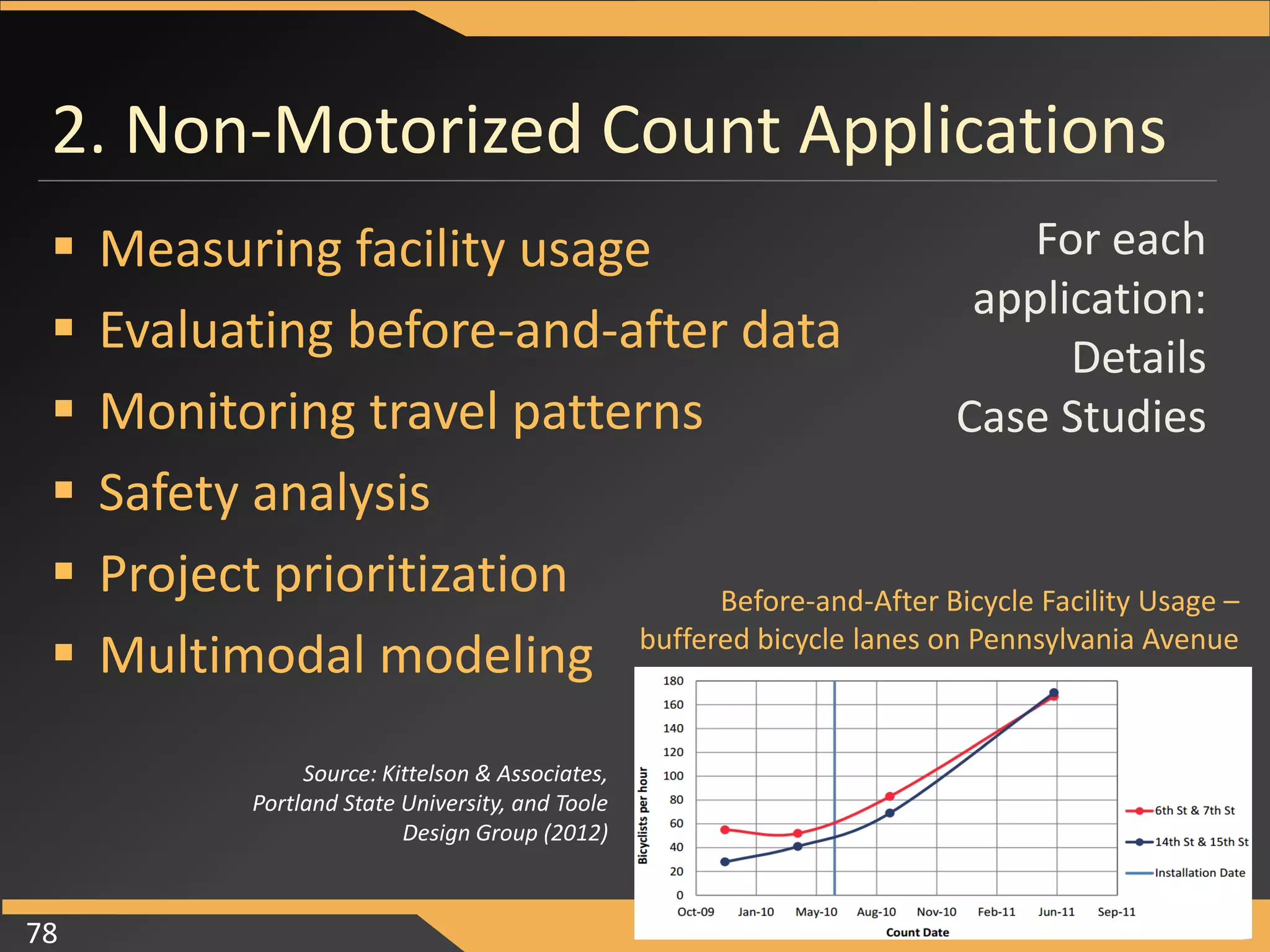The document discusses advancements in pedestrian and bicycle counting programs, specifically focusing on the findings from the NCHRP 07-19 research study. It highlights the need for improved data collection methods and the integration of various technologies to accurately capture non-motorized traffic. The document also outlines a guidebook designed to assist practitioners in implementing effective counting strategies and applications for improved safety and infrastructure prioritization.















































































































